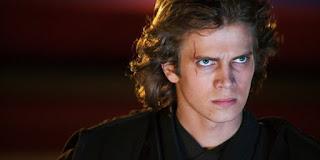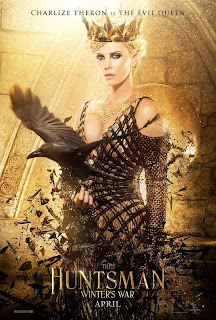Next week I'm off to London to see my beau, and since you can't cross the Pond with me- I'm giving you some English realness by listing my Top 5 Films set in London:
1.) Mary Poppins (1964)
For a kid who used to dream of being British (I answered the phone in an English accent)
Mary Poppins was sheer heaven. I was enchanted by the flowering tree-lined streets, the houses shaped like ships, the seemingly endless rooftop horizon, and the kite-filled sky of London. I wanted to move in with the Banks family on Cherry Tree Lane and jump into chalk sidewalk paintings, dance with chimney sweeps, and have a tea party on the ceiling. No Kansas wheatfields for me. I wanted sooty London.
As I grew up and realized that I was not a long-lost Windsor prince, I also figured out that the London of
Mary Poppins wasn't real. The film was shot on all four of Disney's soundstages a half a world- and fifty years away from the London of 1910 that the film idealizes. But the fantastical world of
Mary Poppins was real in a sense, because it was based on actual Edwardian/Georgian neighborhoods, parks, and buildings- the most obvious being grand old St. Paul's Cathedral.
In order to teach Jane and Michael Banks a lesson in charity, Mary (the "Ha-Ha in your face Audrey Hepburn!" Oscar-winner of 1965, Julie Andrews) produces a snowglobe that contains St. Paul's Cathedral- but instead of snow, small white angles recreate the birds that flock around the domed structure.
As she sings "Feed the Birds" we are magically transported inside the globe to see a withered old woman (Jane Darwell) who sells bags of breadcrumbs to passersby for "tuppence a bag." The animation mixed with the physical set gives the sensation of a dream, and one can't help but feel that you are standing at the steps of the great cathedral looking up at the arches and statues, surrounded by flying birds. That cinematic moment is so memorable that even today, the website for
Saint Paul's has a page with a video clip from the movie. Chokes me up every time.
When I finally made my first trip to London, I didn't see any chimney sweeps, but I did hang out with a couple builders and see some colorful auras while on ecstasy. Saint Paul's was beautiful- and even if I did avoid the flocks of birds (pigeons and I don't get along), I looked for the little old lady to give some tuppence to.
2.) Sweeney Todd: The Demon Barber of Fleet Street (2007)
From 1960's Disney animation to CGI-generated scenery we go. I know I'm going to get some flack from theater-folk who HATED this movie, but I thoroughly enjoyed Tim Burton's take on Stephen Sondheim's classic musical. The titular Sweeney (Johnny Depp) returns to London with revenge on his mind after being wrongly imprisoned at the hands of wicked Judge Turpin (the terribly missed Alan Rickman).
With the help of former neighbor and meatpie shop owner Mrs. Lovett (the queen of odd, Helena Bonham Carter), he opens up a barbershop whose customers leave with much more than a shave and a haircut. The scenery is mostly computer-generated, but the view of a dark, and grimy Victorian London is darkly lush and seductive, and won an Oscar for Best Art Direction.
I know, I know. Burton cut the opening song from the musical "The Ballad of Sweeney Todd"- but rather than sing the backstory up front, Burton let it unfold throughout the film. Yes, I know Johnny Depp does not have the pipes of stage Sweeney Len Cariou. He has at best a rock-styled voice from a garage band that performs at local proms. But Depp broods and simmers pretty well. And of course Helena is no Angela Landsbury. But nobody is- and Angie's too old to do the movie- so I think Helena does a fine job playing the deceitful Mrs. Lovett.
I think what really matters about
Sweeney Todd is its grisly, dark humor, and the cutting lyrics to Sondheim's brilliant score. And who better to do macabre humor than Tim Burton? The montage of Sweeney at the height of his barbering career cleverly follows the rhythm of the song with bone-crunches adding a sick musical punctuation as each customer exits the chair.
Perhaps the most fun comes from the
performance of "A Little Priest" where Sondheim's brilliant lyrics take centerstage amidst the overindulgent film edits, crusty pies, and cleavers.
Perhaps I'll do a
Sweeney Todd tour of London while I'm there...
3.) Sabotage (1936)
Before he came to Hollywood, a thinner Alfred Hitchcock made some exciting films for independent British film companies. One of the most interesting is this gem about a plot to blow-up London. Scotland Yard detective Sergeant Ted Spencer (John Loder) goes undercover to investigate an act of sabotage that left London without power.
He befriends the lovely Mrs. Verloc (the gal with the glorious eyes, Sylvia Sidney) and her young brother Stevie (Desmond Tester) in order to keep tabs on her husband Karl (Oscar Homolka) who Spencer suspects of being involved with the English/German terrorist group. Will Spence find out what the next plot is and stop it in time? I'm not going to say.
The film is a smorgasbord of Hitchock's signature obsessions: birds, Germans, the wife married to someone she doesn't really know, and the movies. The film is also taut with the suspense that was Hitchcock's stock in trade. The famous bus scene where little Stevie is unknowingly transporting a bomb in a film can is unforgettable, the tension building to an unendurable level.
Loosely based on Joseph Conrad's
The Secret Agent, the film is tight and suspenseful with Sidney giving a performance that makes you wonder why she's not well-known today- you may remember her best as the always smoking Juno in
Beetlejuice (1988). She is captivating on screen but reportedly did not get along with Hitchcock, so she never appeared in his films again. Of course, Hitch moved on to blond leading ladies by the time he went to Hollywood anyway. And if you're looking for the famous Hitchcock cameo on the streets of London, don't bother. For some reason, he didn't pop into this film. Maybe he didn't like riding the London bus.
4.) Konga (1961)
We've seen King Kong climb the Empire State Building. We watched giant ants tear up the sewers of Los Angeles. Godzilla has trampled all over Tokyo
and New York City. London felt a little ignored by giant movie monsters, so in 1961, they made
Konga
Producer Herman Cohen was the successful B-Horror Movie schlockmeister behind such classics as
I Was a Teenage Werewolf (1957). In 1959 for reasons I can't unearth, the Detroit native moved to England and continued churning out the very best in terrible horror movies, including two with Joan Crawford:
Berserk (1967) and the not-to-be-forgotten
Trog (1970).
So Cohen's resume made him the perfect producer to make the story of a mad scientist who develops a growth serum and injects it into his favorite lab chimp- who soon grows from little monkey to man in a monkey suit. As Dr. Decker's (Michael Gough) ambitions and paranoia grow, so does his monkey and soon Konga is breaking through the roofs of houses and doing his master's will... until he doesn't. Konga grabs ahold of Dr. Decker and makes Big Ben his own personal stripper pole. But as Kong could tell Konga, it never turns out well when a monkey climbs a national landmark.
The monster movie is a beloved genre- and like its kin,
Konga questions unfettered Atomic Age science and the reckless act of mucking around with nature. Cohen sluts it up a little by adding a blond lab assistant, but essentially he follows the mad scientist/monster paradigm, creating laughable acting, dialogue, and effects along the way.
Frequent Cohen collaborator Michael Gough snarls his was through the picture making Dr. Decker as unlikable as possible. Funny to think that at the end of his career Gough would star as the beloved Alfred in the Tim Burton
Batman (1989). From monkeys to bats. That's showbiz!
5.) Beautiful Thing (1996)
Ah, gay London! I'll never forget the night at Heaven danceclub when I went home with a gent who told me he was Prince Andrew only to find out we weren't going to Windsor Castle and I was not about to make it with a member of the royal family. Gay princes aside, being gay in London has the same pitfalls as anywhere else, and that's why Hettie Macdonald's
Beautiful Things is so universal.
Jamie (Glen Berry) is the product of Thamesmead, a South London working class project where the square concrete apartments are so close together, there is little to hide. And Jamie has lots to hide. He has a crush on his studly schoolmate Ste (Scott Neal). Ste's family life is abusive and after one particularly rough beating, he winds up at Jamie's house under the care of Jamie's wacky ma (
EastEnders regular Linda Henry.)
As Ste lies in Jamie's bed, open and vulnerable, Jamie opens up too, and exposes his feelings for Ste by giving him a kiss. As any gay teen knows, this sort of thing can go horribly wrong, and Ste overwhelmed with guilt and shame, runs for the hills. But
Beautiful Thing doesn't leave it there. Like the Mama Cass soundtrack that wafts from the neighbor's record player, this film embraces difference and hope. Rather than tell another gay tragedy,
Beautiful Thing finds a happy ending for these two young men.
When the film came out it caused quite a stir- but not just because it was a gay romance.
Beautiful Thing emerges from the dark AIDS era with an optimistic sense of the joy and possibility of gay love. And if the scene of Jamie and Ste slowdancing in the courtyard to "Dream a Little Dream of Me" doesn't make your eyes moist, you need to get
Restasis.
That's all for me London post, mates. I'll be back quicker than you can say, "Churchill's knickers!"
Chin-chin and all that rot!





























































